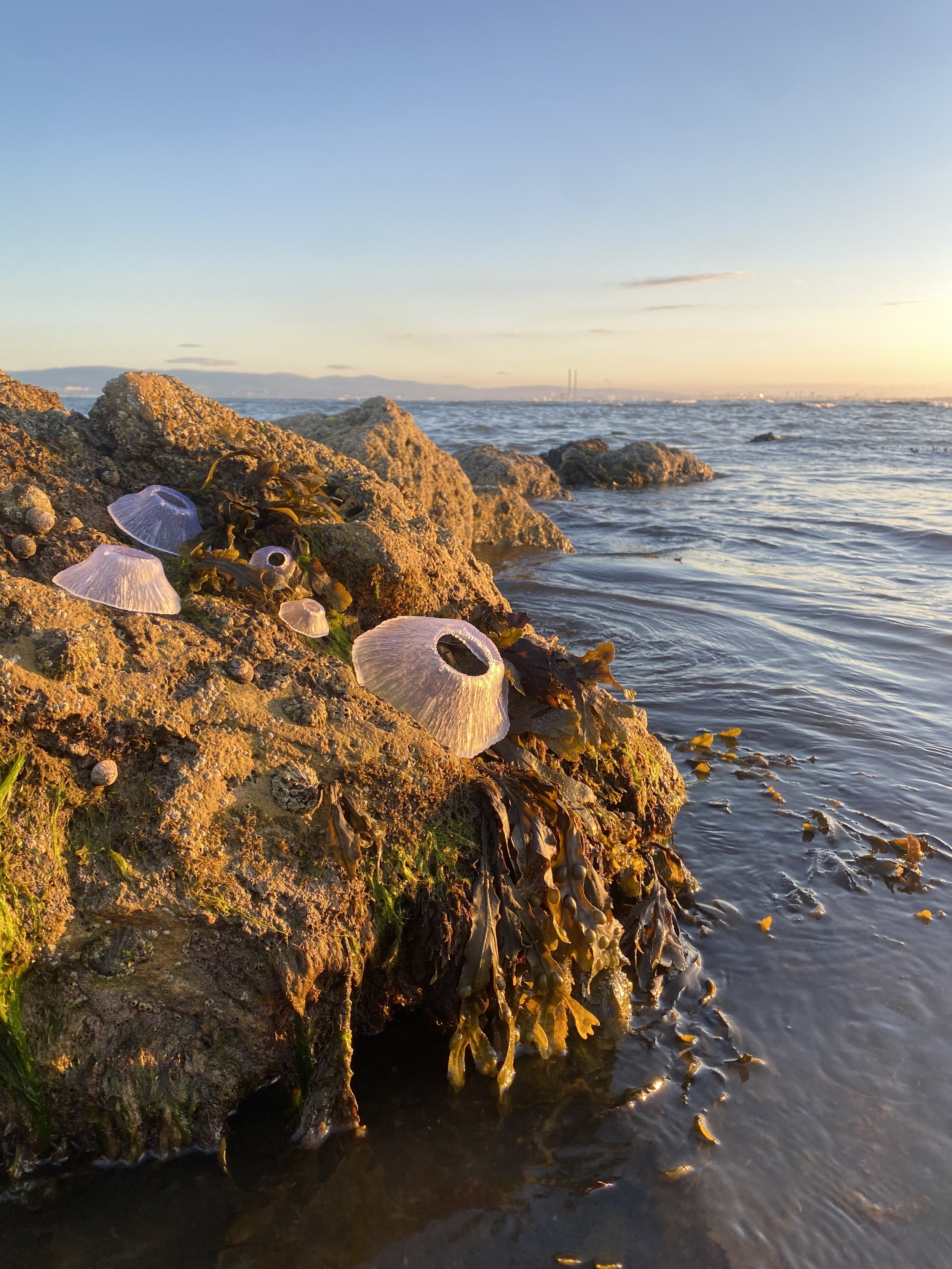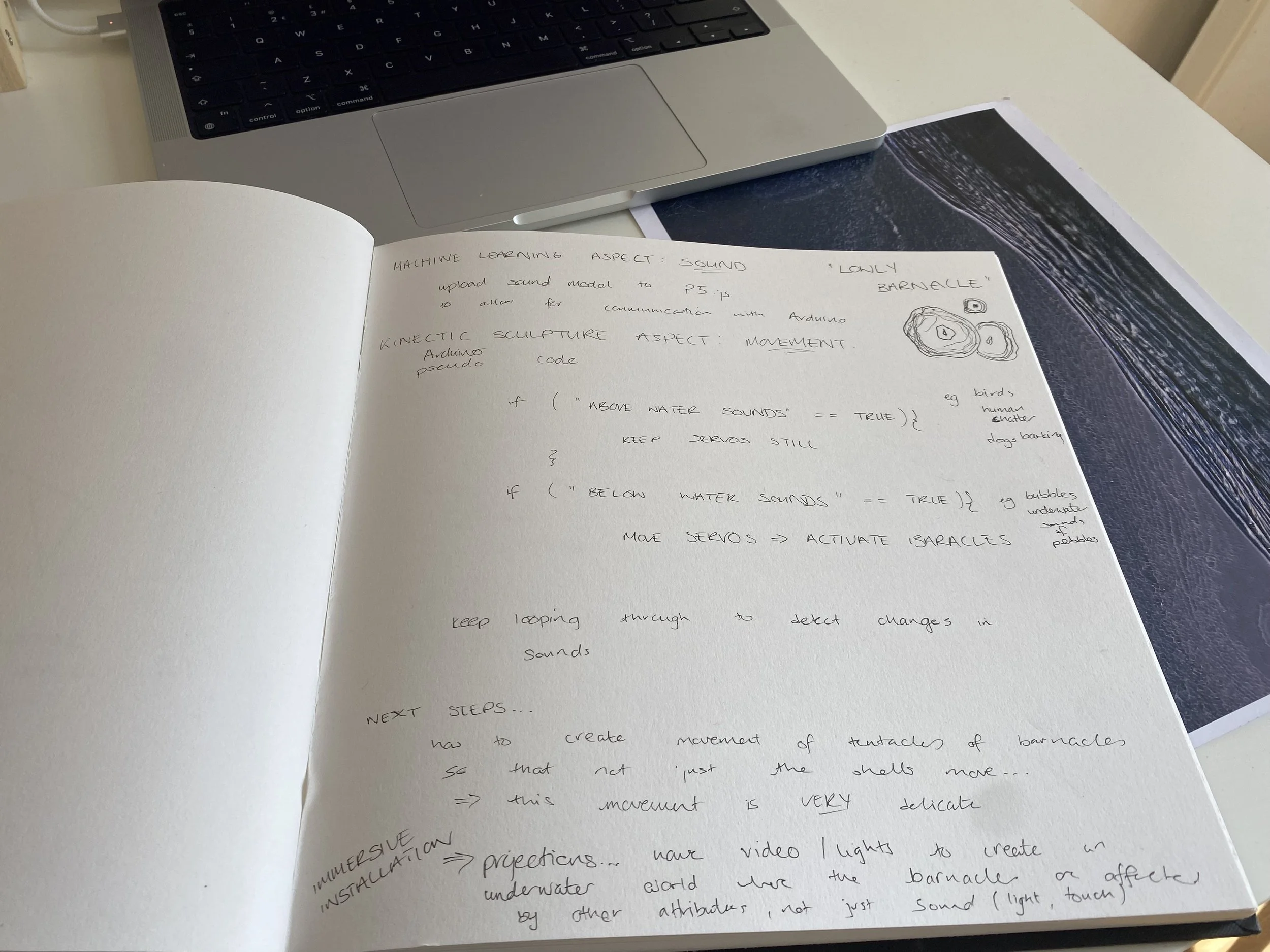The Lowly Barnacle
2024, Work in Progress, funded by DYCP Arts Council England
Drawing inspiration from Charles Darwin’s theory of evolution and Alan Turing’s fascination with crustaceans, this work dives into the intricate relationship between biological evolution and artificial intelligence. The kinetic sculpture reinterprets the remarkable adaptation strategies of barnacles, particularly their mating optimisation algorithm, which has inspired scientific research in efficient problem-solving.
Barnacles, through generations, have perfected their survival mechanisms, offering a natural parallel to how machine learning algorithms evolve by analyzing data and improving over time. This project translates these concepts into a dynamic representation, emphasizing the ongoing dialogue between nature’s ingenuity and human technological advancement.
The sculpture is composed of 3D-printed barnacles attached to servo motors, which react to sounds based on a machine learning model trained by the artist. Two types of sounds were used: one recording of sounds above the sea, such as birds, and the other of underwater sounds. Barnacles, usually found in liminal spaces or tidal pools, remain in the same place for life. When the model identifies above-water noises, the barnacles stay still to protect themselves. Conversely, when underwater sounds are detected, the motors are triggered, and the barnacles move, mimicking their natural behavior of extending their cirri to feed and reproduce.
By integrating movement, The Lowly Barnacle highlights the principles of continuous learning and adaptation. This sensory storytelling experience not only animates the barnacle's biological processes but also metaphorically represents the iterative nature of machine learning, prompting viewers to reflect on the ethical implications and future trajectories of our relationship with technology.
Inspired by the principles of hydro-feminism, the piece underscores the symbiotic relationships barnacles exemplify, fostering a sense of interconnectedness and care. Unlike traditional representations, this sculpture uses kinetic elements to create a sensory storytelling experience, making the intricate dance of adaptation both visible and tangible. The Lowly Barnacle is a bold approach at investigating into how nature’s strategies can inform and inspire technological innovation. By drawing from the evolutionary insights of Darwin and the computational curiosity of Turing, this work offers a compelling narrative on the synergy between natural and artificial systems, urging us to rethink our ethical responsibilities and the future of our technological endeavors.
Generating Models from Paintings
These images have been created using a computer vision technique called style transfer that involves recomposing the content of one image with the style of another. For the selection below I have taken the style of my mussels paintings and applied it to photographs I have taken. The metallic golds, silvers and navies from the painting are visible in the output after the style transfer code has been implemented.
Breaking, West of Ireland, with style transfer applied, 2022
Image of a Wave with style transfer applied
Surfer on Wave, with style transfer applied, 2021
Beast from the East, Howth Pier, with style transfer applied, 2022
Bailey Lighthouse, Howth, with style transferred applied, 2021
Howth Harbour, with style transferred applied, 2021











